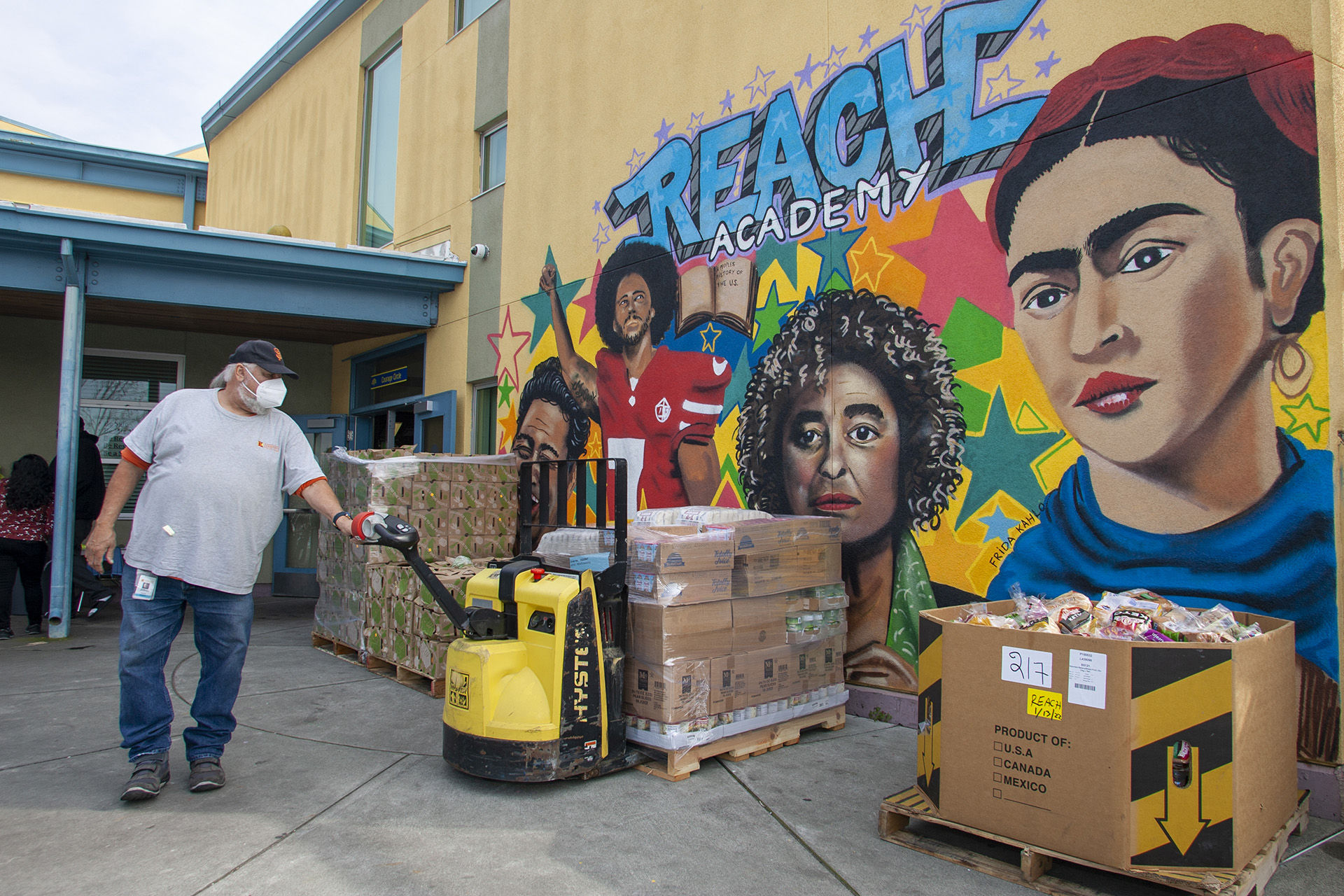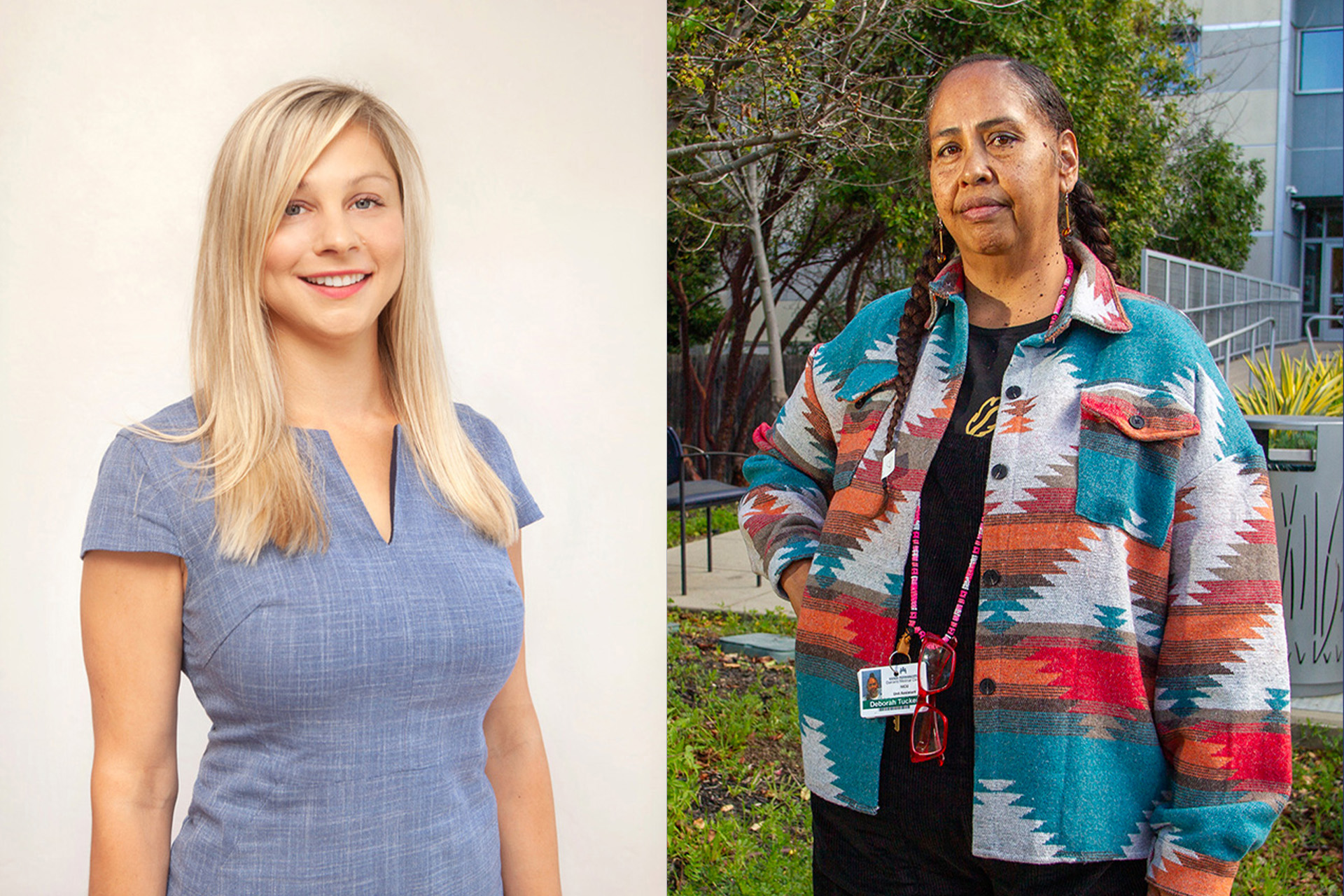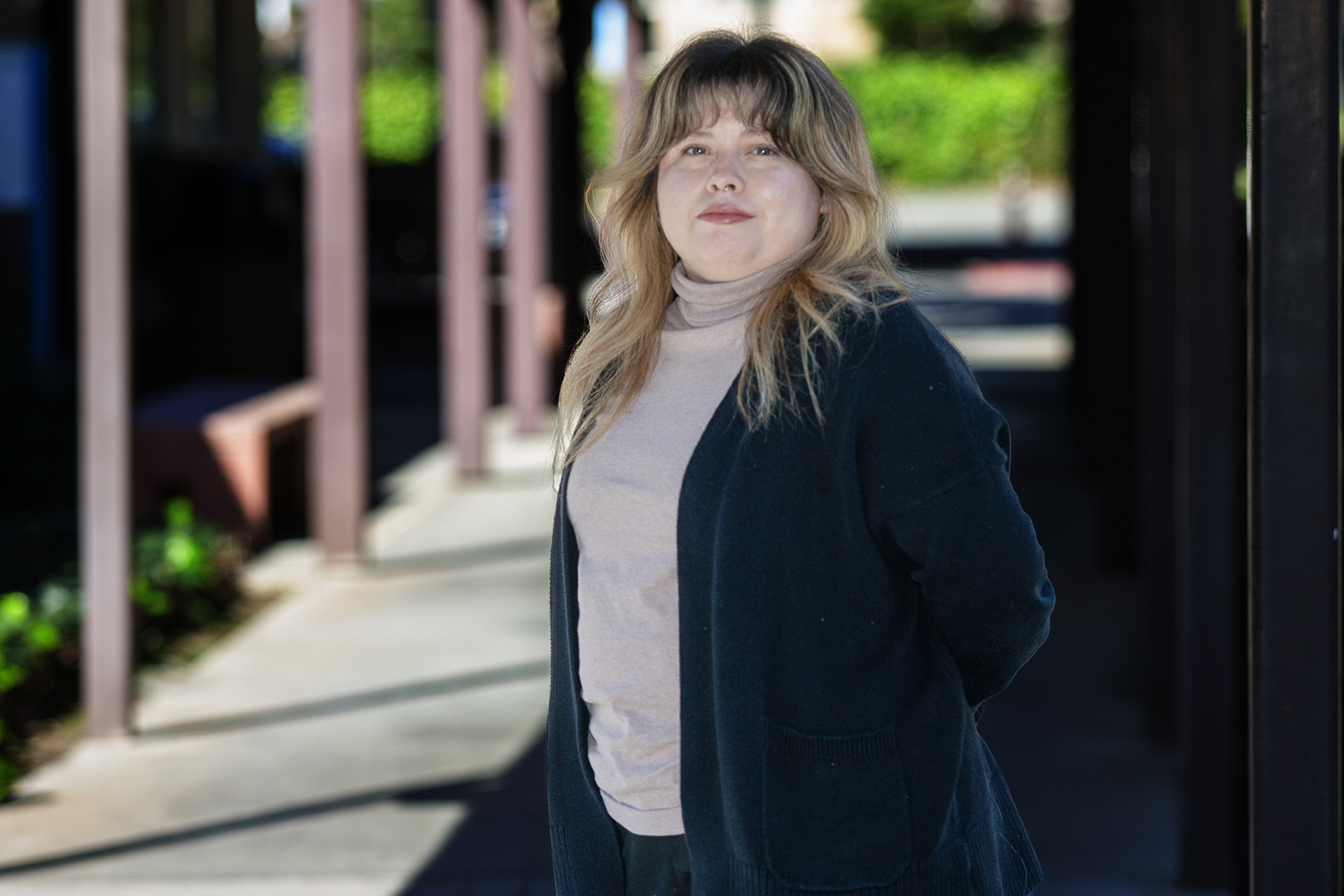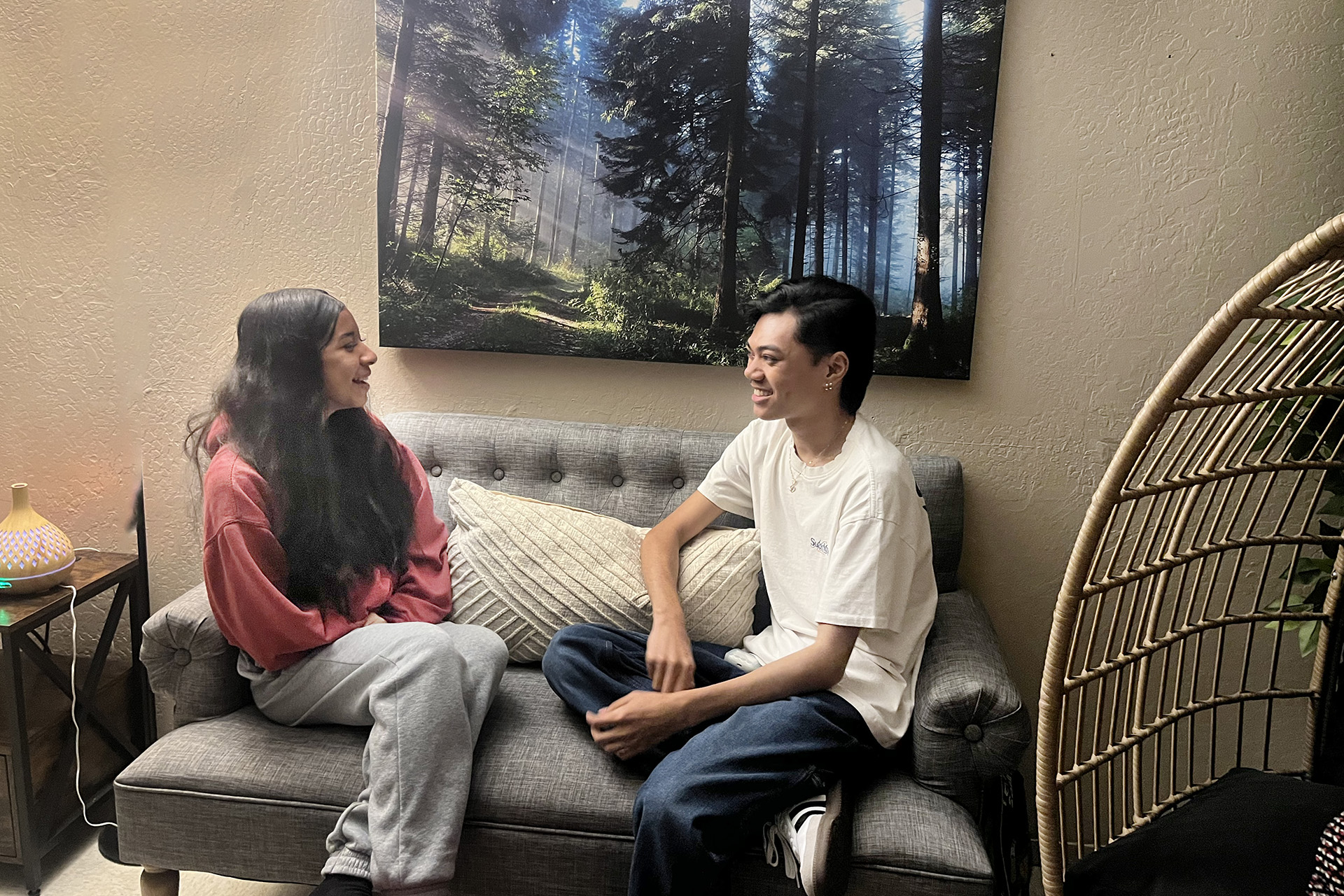When people lost their jobs or quit high-risk positions out of fear of infection after the COVID-19 pandemic hit nearly 2 years ago, the need for food went through the roof.
“The demand for food went up exponentially when COVID-19 happened, and it hasn’t backed off in any way, shape, or form,” said Jaymie Lollie, community school manager at East Oakland’s Frick United Academy of Language, a middle school with 309 students.
The school distributes food to students, their families, and anyone in the community once a month, courtesy of a 3,000-pound delivery from Alameda County Community Food Bank. Nineteen other schools in the Oakland Unified School District receive similar distributions once or twice a month.
About 12% of Oakland students surveyed in 2021 said they are sometimes hungry because they don’t have enough food.
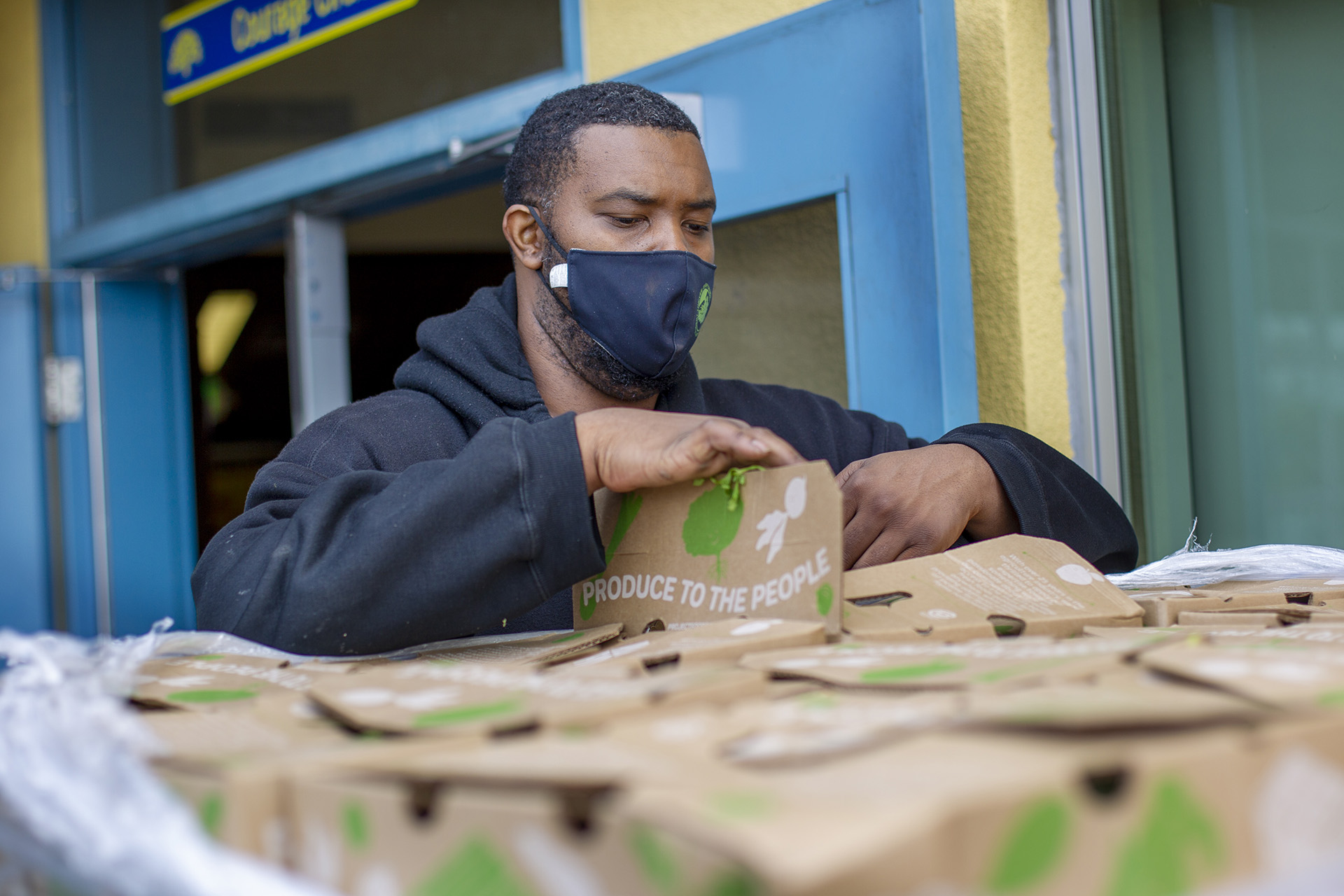
The food bank recently received a $350,000, 2-year grant from Kaiser Permanente to help meet its goal of distributing 10.6 million pounds of food to 25,000 children and their families through school-based programs in Alameda County. The grant helps pay for food and helps low-income families enroll in the CalFresh food benefit program. The Alameda County grant is part of a larger $2 million in grants from Kaiser Permanente to 7 Northern California food banks.
Alameda County Community Food Bank is distributing 70% more food now than it did before the pandemic began, said Michael Altfest, director of community engagement and marketing.
That translates to an estimated 58 million pounds of food in 2022, up from 34 million pounds in 2019, said Altfest.
“Right now, about 25% of Alameda County residents are experiencing some level of food insecurity, which is more than 400,000 people,” he added.
Kaiser Permanente has a strong history of addressing food security among members and communities it serves, said Yvette Radford, Kaiser Permanente Northern California vice president of External and Community Affairs.
“Our goal is to ensure that people in our community have access to nutritious food so they can stay healthy,” said Radford. “Food distributions at local schools make it easy for students and families to access food they need, and our support of CalFresh enrollment helps ensure eligible households get critical food benefits.”
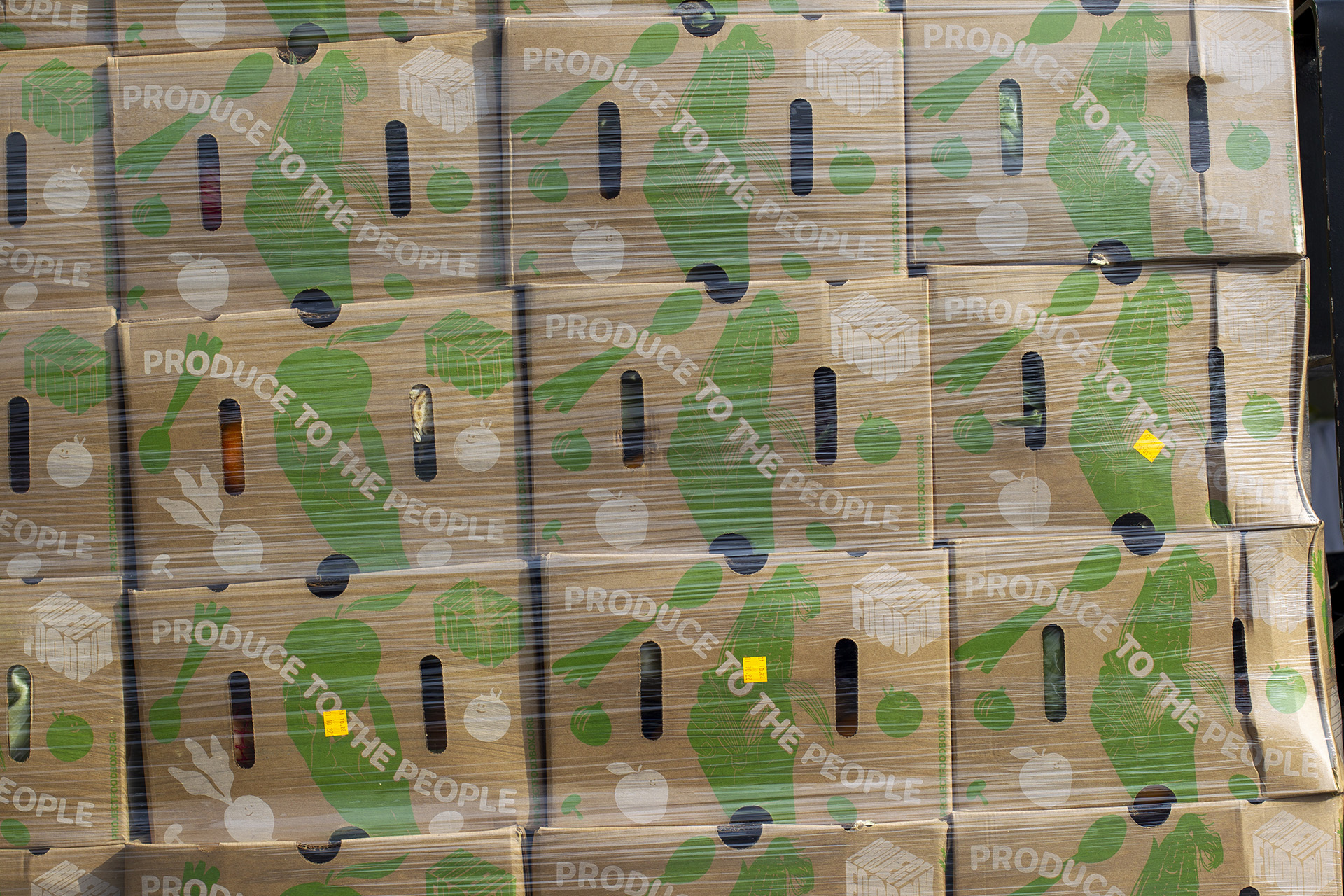
When schools shut down for distance learning in the spring of 2020 and then much of the next fall and spring, low-income students who normally received free or reduced breakfast and lunch at their schools were poised to suffer, because it would have cut off a huge part of their daily nutrition. But because individuals and organizations immediately rallied with donations, Alameda County Community Food Bank was able to increase the amount of food it gave out at schools.
“We do have a very passionate community that really stepped up,” said Altfest. “Kaiser Permanente’s support is extremely helpful for us. Nobody had ever seen the need for food go up like it has in the last 2 years.”
At the Frick school, the monthly food distribution allows low-income East Oakland families to shift some of their income from buying food to other necessities such as transportation and medicine, said Lollie.
“We are 100% a school of color with a high special education population, a high population of newcomers from other countries, and transient or homeless students,” said Lollie. “Everybody has to eat, and the food bank is fulfilling a very basic need.”
